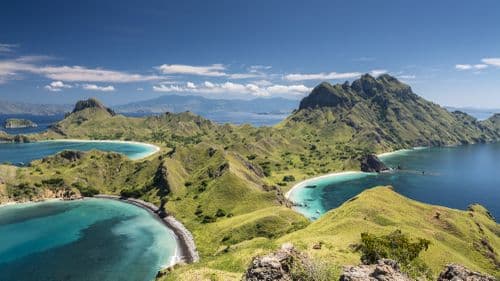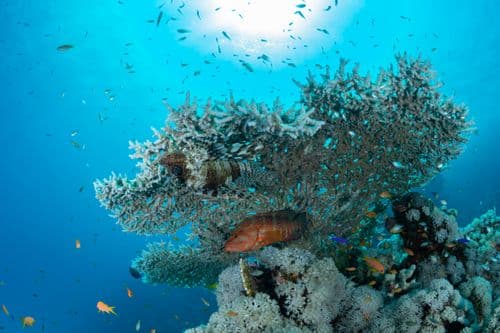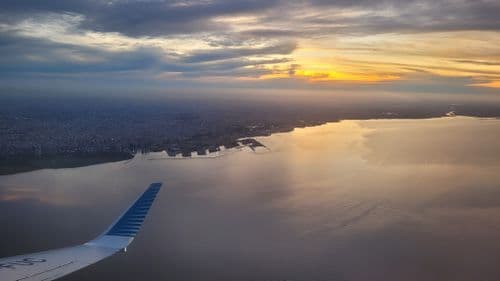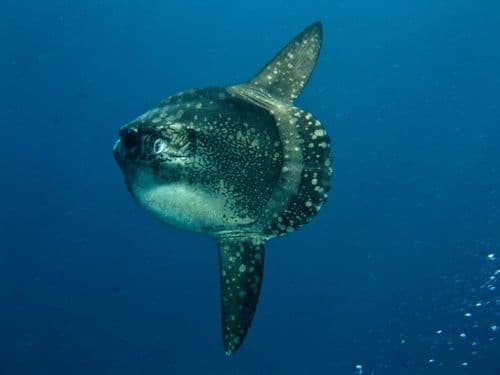
Best Diving Spots in Bali
Explore Bali’s Best Dive Sites and Liveaboard Adventures
What are the best diving spots in Bali?



Top dive sites in Bali
Bali is a diver's paradise, offering a range of dive sites that cater to all levels of experience. Whether you’re a beginner or a seasoned diver, Bali has something for everyone. Some of the top dive sites include:
- Tulamben (USS Liberty Wreck): Located on Bali's northeastern coast, this site is home to the famous USS Liberty wreck, a must-visit for any diver. The wreck is teeming with marine life, including schools of trevallies, bumphead parrotfish, and a variety of macro critters. With its shallow depths and calm conditions, it's perfect for both novice and experienced divers. The area around the wreck is also popular for muck diving, where you can spot a diverse range of small and unusual creatures hiding in the black volcanic sand.
- Nusa Penida (Crystal Bay): Known for its crystal-clear waters and vibrant coral reefs, Nusa Penida offers thrilling drift dives. Crystal Bay is one of the best places in Bali to encounter the elusive Mola Mola (sunfish) during the season from July to October. The site also features beautiful coral gardens and abundant marine life, making it a favorite among underwater photographers. In addition to the larger marine species, the surrounding reef offers opportunities for muck diving, where divers can discover an array of tiny critters.
- Menjangan Island: Situated in the West Bali National Park, Menjangan Island is famous for its pristine coral walls and excellent visibility. The island is less crowded, providing a more tranquil diving experience. Divers can expect to see vibrant coral formations, reef sharks, turtles, and schools of tropical fish in these waters. The combination of calm conditions and rich marine life also makes Menjangan an excellent location for macro and muck diving enthusiasts.
- Amed: Amed offers a variety of dive sites, including vibrant coral reefs and intriguing artificial reefs. The area's calm conditions make it ideal for macro photography, with a chance to spot critters like nudibranchs, ghost pipefish, and pygmy seahorses. The Japanese shipwreck here is another highlight, lying in shallow waters and accessible to snorkelers and divers alike. Amed is also a popular spot for muck diving, where divers can uncover an abundance of hidden treasures among the sand and debris.
What are the top Bali scuba diving locations?
Bali boasts a diverse array of scuba diving locations, each offering unique underwater experiences. Some of the top Bali scuba diving locations include:
- Padang Bai: This coastal village is a gateway to several outstanding dive sites, including Blue Lagoon and Bias Tugel. Known for its calm conditions, Padang Bai is ideal for beginner divers and those interested in macro photography. Expect to see colorful coral gardens, frogfish, and even the occasional reef shark. The area is also well-suited for muck diving, with many small and cryptic species hiding in the sand and rubble.
- Candidasa: Located on Bali’s eastern coast, Candidasa provides access to sites like Gili Tepekong and Gili Mimpang. These sites are renowned for their dramatic underwater landscapes, featuring steep walls and large coral bommies that attract a variety of marine life. Divers here can experience the thrill of encountering sharks, rays, and large schools of fish in the deep blue. Candidasa also offers muck diving opportunities, where keen-eyed divers can search for rare and unusual critters in the sandy and rocky areas.
- Nusa Lembongan: Part of the Nusa Islands, Nusa Lembongan is a short boat ride from Bali and offers a range of dive sites that are less crowded but equally stunning. Here, you can explore vibrant coral gardens, spot manta rays at Manta Point, and experience the thrill of drift diving. The calm waters and rich marine life make it an excellent location for divers of all levels. The nearby sites also provide fantastic muck diving experiences, where you can find everything from tiny shrimp to colorful nudibranchs
Where can I go on a liveaboard diving tour from Bali?
Liveaboard diving tours from Bali typically focus on exploring the rich underwater landscapes of Sumbawa and Komodo. These tours offer the opportunity to dive in some of Indonesia’s most renowned spots, with a seamless transition from Bali’s waters to the more remote dive sites.
- Komodo National Park: Liveaboard tours from Bali often include Komodo National Park, a UNESCO World Heritage Site known for its diverse marine life and strong currents. Highlights include encounters with manta rays at Manta Alley, drift dives at Batu Bolong, and the chance to see the famous Komodo dragons on land excursions. Komodo is also a haven for muck diving, with sites like Cannibal Rock offering the chance to see rare nudibranchs, frogfish, and other unique critters.
See all trips in Komodo National Park
- Sumbawa Island: Located between Bali and Komodo, Sumbawa is an often-overlooked gem. The dive sites here are less crowded, offering a more intimate diving experience. You can explore the stunning reefs, walls, and pinnacles that are home to everything from tiny critters to large pelagics. Sumbawa also boasts some excellent muck diving sites, where divers can spot a variety of strange and fascinating marine life in the sandy and silty environments.
Why choose a liveaboard diving tour from Bali?
Liveaboard diving tours from Bali are perfect for those who want to maximize their underwater experience and explore a variety of dive sites in a single trip. These tours allow you to access remote and pristine dive sites that are not reachable on day trips. You’ll have the opportunity to dive at sites that are less frequented by day trippers, ensuring a more exclusive and serene diving experience. Plus, the convenience of traveling from Bali, with its excellent connectivity, makes it a popular starting point for divers looking to explore more of Indonesia's underwater wonders.
What should I expect from the dive conditions in Bali?
Bali’s dive conditions vary depending on the location and season.
Generally, you can expect warm waters with temperatures ranging from 26°C to 29°C (79°F to 84°F). This makes Bali a comfortable destination for diving year-round, although water temperatures can be slightly cooler in areas with strong currents, such as Nusa Penida.
Visibility is often excellent, particularly in sites like Menjangan Island and Nusa Penida, where it can reach up to 30 meters (98 feet). However, visibility can vary depending on the season and weather conditions. During the rainy season (December to March), visibility might decrease slightly, but the dive sites are still accessible and enjoyable.
Currents can be strong in areas like Nusa Penida and Candidasa, which are known for their drift dives. These currents bring nutrient-rich waters that attract large pelagic species, but they also require divers to be experienced and comfortable in such conditions. In contrast, areas like Amed and Tulamben offer calm and gentle conditions, making them ideal for beginners or those looking for a more relaxed dive.
Bali also offers a variety of diving environments, from coral reefs and walls to muck diving sites with sandy or silty bottoms. Each of these environments provides different diving experiences, whether you're exploring the vibrant coral gardens of Padang Bai or searching for rare critters in the muck at Amed.
What is muck diving, and where can I experience it in Bali?
Muck diving is a unique form of diving that involves exploring sandy, silty, or muddy environments in search of small, often camouflaged marine creatures. These sites may not have the vibrant corals of a reef dive, but they are teeming with unusual and fascinating critters, making them a favorite among macro photographers and divers who enjoy discovering the hidden gems of the underwater world.
In Bali, several locations are renowned for their muck diving opportunities:
- Tulamben: The area around the USS Liberty wreck is a hotspot for muck diving, where you can find everything from mimic octopuses to flamboyant cuttlefish hiding in the black sand.
- Amed: Amed's calm and shallow sites are perfect for muck diving, with an array of small creatures like frogfish, ghost pipefish, and nudibranchs waiting to be discovered.
- Padang Bai: Known for its diverse dive sites, Padang Bai also offers excellent muck diving, particularly in the sandy areas around Blue Lagoon, where you might spot rare species like the rhinopias or leaf scorpionfish.
Is Bali suitable for beginner divers?
Absolutely! Bali is a fantastic destination for beginner divers, offering a range of sites with calm conditions, easy access, and stunning underwater landscapes. Locations like Amed, Tulamben, and Padang Bai are especially popular with beginners, thanks to their gentle currents, warm waters, and shallow depths. These sites provide an ideal environment for learning to dive, with plenty of marine life to keep you entertained as you build your skills.
At the same time, Bali's diverse range of dive sites means that as you gain experience, you can gradually take on more challenging dives, such as the drift dives at Nusa Penida or the deeper sites at Candidasa. This makes Bali not only a great place to start your diving journey but also a destination you can continue to enjoy as you grow more confident
























